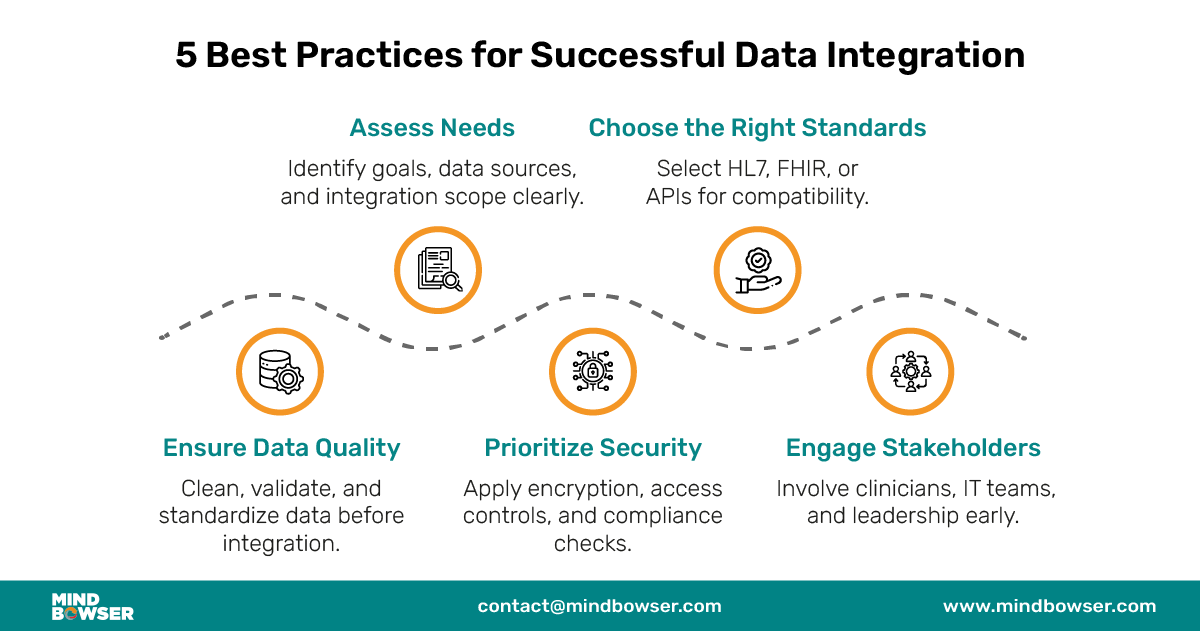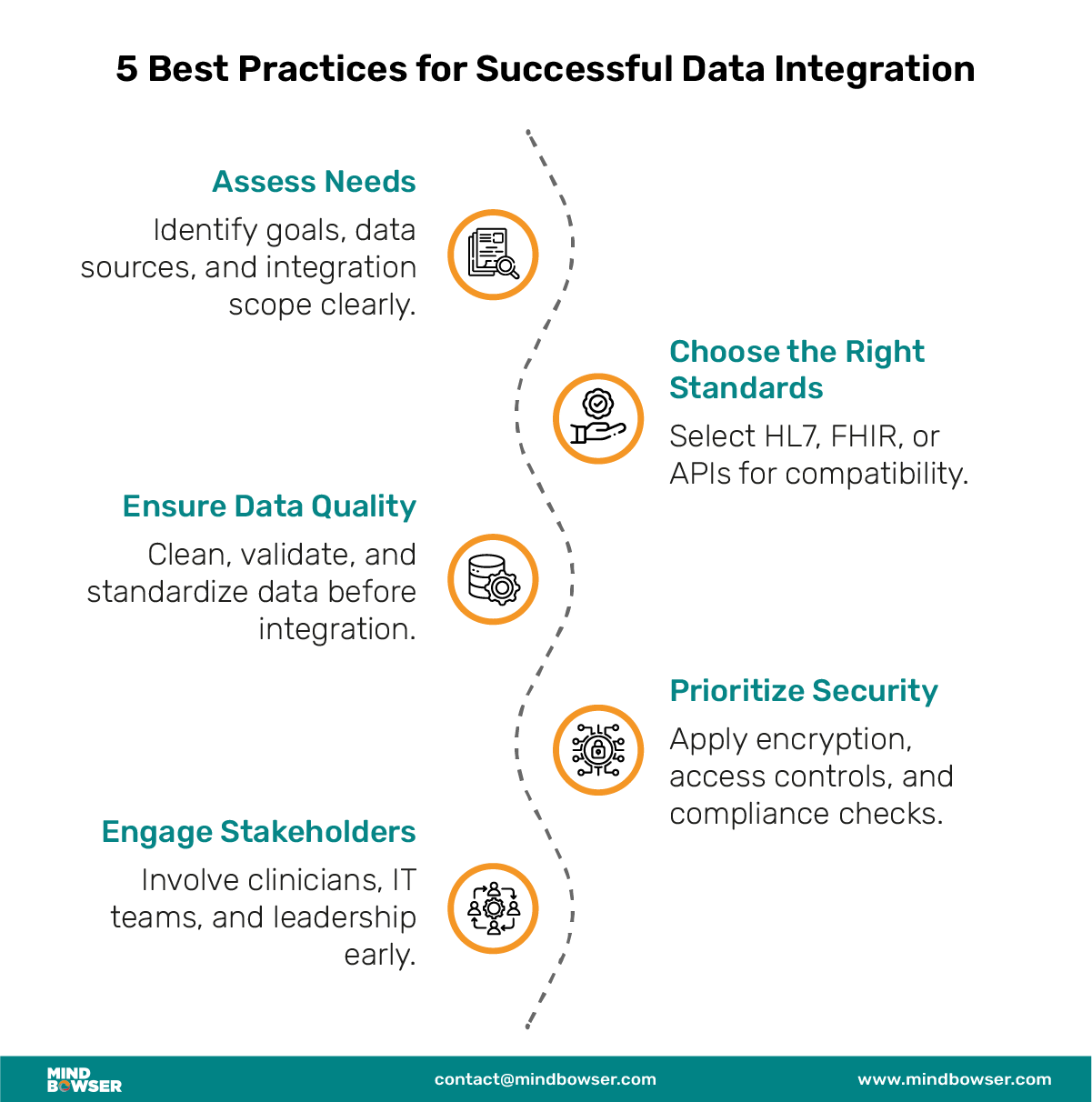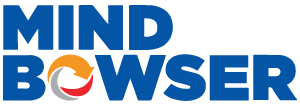Healthcare today is driven by data, but much of it sits in isolated systems. Electronic Health Records (EHRs), diagnostic tools, billing systems, and wearable devices often operate independently. Without proper connectivity, providers face delays, duplication, and gaps in critical information that can compromise care.
EHR data integration solves this by making healthcare systems communicate. It ensures that lab results, medications, visit summaries, and even real-time vitals are instantly accessible where and when they’re needed. This helps physicians make better decisions, avoid redundant tests, and improve patient outcomes.
For hospitals, clinics, and digital health companies, understanding how EHR data integration works is essential. In this guide, we break down what integration means, its major benefits, common hurdles to watch out for, and how to get it right, whether you’re integrating with Epic, Cerner, Athenahealth, or using modern FHIR-based APIs.
EHR data integration means connecting electronic health record systems with other healthcare tools to allow smooth and secure data sharing. It links systems like labs, imaging centers, pharmacies, and billing platforms to one unified data source.
With integration in place, care teams can:
🔸 View complete patient records in real time
🔸 Avoid repeat tests or gaps in care
🔸 Make faster, more informed decisions
EHR data integration isn’t just about connecting software. It’s about creating a single source of truth that improves patient outcomes and simplifies clinical workflows.
This setup supports everything from population health analytics to value-based care programs by ensuring the right data gets to the right provider at the right time.
Related Read: EHR Integration: Why It’s Essential for Healthcare Data Management
Integrating EHR data across systems is more than just a technical upgrade—it directly impacts patient outcomes, staff efficiency, and compliance readiness. Below are the core benefits of EHR data integration for hospitals and healthcare providers.
🔸 Comprehensive patient histories: Doctors and care teams get a complete view of the patient’s medical records, including lab results, medication lists, allergies, and past procedures. This ensures better diagnoses and treatment planning.
🔸 Fewer medical errors: When data flows accurately across systems, providers rely less on manual entry. This minimizes risks like incorrect prescriptions or overlooked allergies.
🔸 Stronger care coordination: Integrated records enable seamless collaboration between primary care, specialists, and emergency services, improving continuity and quality of care.
🔸 Automated data entry: By reducing the need for manual updates across systems, staff can focus more on patients and less on paperwork.
🔸 Faster patient processing: Clinicians and admins can quickly retrieve records, schedule appointments, and share documentation, speeding up the entire care journey.
🔸 Fewer duplicate tests and scans: Shared data eliminates unnecessary repetitions, reducing both cost and patient inconvenience.
🔸 Aligned with HIPAA and HL7 standards: EHR data integration supports adherence to critical healthcare data standards, helping reduce legal risks and audit failures.
🔸 Secure and standardized data sharing: With encryption and access controls in place, patient data stays protected while remaining accessible to authorized users.
🔸 Efficient reporting for performance metrics: Integrated systems simplify the generation of quality reports and compliance submissions, a must for value-based care programs.
Related Read: How Seamless EHR Integration Supports Early Disease Detection
Healthcare organizations face several hurdles when working to unify data across systems. While the benefits of EHR data integration are clear, achieving smooth and secure interoperability isn’t always straightforward.
Many healthcare facilities operate with multiple, disconnected systems. These data silos trap valuable patient information within specific departments or applications. As a result, clinicians often lack a full view of a patient’s medical history, which can delay diagnosis, duplicate testing, and disrupt coordinated care. Breaking down these silos is essential for accurate and timely decision-making.
Each system may store and exchange data using different formats, coding standards, or communication protocols. One EHR might use HL7 v2 messages, while another is built on FHIR APIs or proprietary formats. These inconsistencies make integration complex and error-prone. Without standardized data models, mapping and transforming records for compatibility becomes a technical and costly task.
EHR systems hold sensitive health information protected by laws such as HIPAA. During integration, this data is exposed to additional risks—unauthorized access, data leakage, or breaches. A secure integration strategy must include encryption, user authentication, audit logging, and ongoing compliance checks. Failing to secure integrated systems not only jeopardizes patient privacy but can also lead to regulatory penalties.
Selecting the right integration method is crucial for ensuring smooth data flow and long-term scalability. Here are the four most common methods used in EHR data integration:
Point-to-point integration connects two systems directly, allowing them to exchange data without any intermediary.
🔸 Best suited for small-scale or one-to-one system integrations
🔸 Easy to implement initially but gets complicated with more endpoints
🔸 Hard to maintain as each connection requires a custom setup
This method is practical for startups or smaller practices integrating a single third-party app but becomes a bottleneck when the ecosystem grows.
Health Level Seven (HL7) is a widely adopted standard in healthcare IT. HL7 interfaces structure data for consistent sharing across different platforms.
🔸 Supports real-time and batch data exchange
🔸 Ideal for connecting EHRs with labs, billing systems, or imaging tools
🔸 Enables message-based communication using formats like HL7 v2 and CDA
It is especially useful in legacy systems that still rely on HL7 for internal and external communication.
Fast Healthcare Interoperability Resources (FHIR) APIs are modern, web-based solutions designed for interoperability.
🔸 Built using RESTful APIs, making them developer-friendly
🔸 Supports data exchange via JSON or XML formats
🔸 Enables granular access to patient records, improving care coordination
FHIR is the go-to standard for new digital health apps and mobile platforms that demand real-time access and scalability.
Middleware acts as a communication bridge between multiple systems without creating direct dependencies.
🔸 Simplifies integration by acting as a centralized hub
🔸 Manages data transformation, validation, and routing
🔸 Reduces complexity as your system architecture scales
Middleware is particularly effective in larger healthcare networks where multiple EHRs, apps, and data sources need to connect securely and efficiently.
Related Read: How Seamless EHR Integration Supports Early Disease Detection
Healthcare organizations looking to improve care coordination and data access must approach EHR data integration strategically. A well-planned integration minimizes disruption, enhances reliability, and sets the foundation for future scalability. Here are the key best practices every provider should follow:
Start by identifying the core requirements and integration goals. Are you aiming to connect with a specific EHR system like Epic or Cerner? Do you need to sync patient records with wearable devices or billing systems? Understanding these needs upfront helps define scope, select the right tools, and avoid scope creep later.
Key questions to ask:
🔸 What systems need to be connected?
🔸 What data should be exchanged?
🔸 Who will use the integrated data and how?
Data exchange in healthcare must follow industry-recognized standards. Choosing the right framework ensures compatibility and regulatory compliance. Most integrations today rely on:
🔸 HL7 (Health Level Seven) for structured message-based exchange
🔸 FHIR (Fast Healthcare Interoperability Resources) for API-based modern interoperability
Pick a standard that aligns with your current systems and future roadmap. FHIR is ideal for app-based architectures, while HL7 works well for legacy systems.


Poor data leads to poor outcomes. Before integration, clean and validate your datasets. Ensure consistency in formats (e.g., date fields, coding standards) and resolve duplicates or outdated records.
Best practices include:
This step improves reliability and trust in the system.
Security isn’t an add-on—it’s a requirement. Integration often involves handling protected health information (PHI), making it subject to HIPAA regulations. Ensure encryption for data in transit and at rest, use secure APIs, and implement strong access controls.
Don’t forget:
🔸 Role-based access for different user types
🔸 Regular security audits and monitoring
🔸 Logging and alerting for suspicious activity
Successful integration needs more than just technical alignment—it requires buy-in across departments. Involve end-users early: clinicians, billing staff, and IT teams. Their insights can prevent workflow disruptions and improve long-term adoption.
Set up a cross-functional team to:
🔸 Define workflows and edge cases
🔸 Test integrations before rollout
🔸 Provide ongoing training and support
Stakeholder alignment ensures the solution meets real-world needs and delivers measurable value.
At Mindbowser, we simplify EHR data integration by offering healthcare-specific technical expertise and compliance-ready solutions. Whether you’re connecting with Epic, Cerner, Athenahealth, or building custom integrations across your systems, our team ensures reliable data flow and end-to-end support.
We’ve integrated with top EHRs like Epic, Cerner, and Athenahealth using HL7, FHIR, and custom APIs. Our team understands the unique challenges each system presents—and how to solve them without slowing down your operations.
Related Read: Top 5 EHR Integration Software Companies
From HIPAA to HL7 and SOC 2, we build integrations with compliance in mind. Our architecture includes data encryption, access controls, and audit logging, so your patient data remains protected.
Our proprietary solution accelerator, HealthConnect CoPilot, speeds up integration by offering:
This saves development time and avoids reinventing the wheel.
Want to see how real-world wearable integration solves EHR challenges?
Read: Solving EHR Integration Challenges with Smart Software for Wearable Devices in Healthcare
We design workflows tailored to your specific use cases—whether it’s syncing patient intake data, connecting lab systems, or enabling telehealth platforms. Our team maps your data models to ensure seamless communication between systems.
From scoping and planning to deployment and support, we take full ownership of the integration process. You’ll have a dedicated healthcare-focused engineering team ready to align with your timelines and goals.
Whether you’re building a new healthcare platform or modernizing your existing stack, Mindbowser helps you integrate smarter, faster, and without compliance worries.
👉 Contact us to explore how we can streamline your EHR data integration.

EHR data integration is no longer optional—it’s a critical step toward better, faster, and safer patient care. It breaks down data silos, reduces manual processes, and ensures clinical teams have timely access to the information they need.
While integration can come with its hurdles—like interoperability gaps, data quality issues, and privacy concerns—those challenges are manageable with the right planning, standards, and security practices in place.
When done right, EHR data integration not only supports compliance with HIPAA and HL7 standards but also improves clinical workflows, decision-making, and patient outcomes. For healthcare providers looking to modernize operations, it’s the foundation for building smarter, more connected care systems.
It provides healthcare providers with comprehensive and up-to-date patient information, facilitating informed decision-making and coordinated care.
Common challenges include data silos, interoperability issues, and ensuring data security during the integration process.
Health Level Seven (HL7) and Fast Healthcare Interoperability Resources (FHIR) are widely adopted standards for EHR data exchange.

We worked with Mindbowser on a design sprint, and their team did an awesome job. They really helped us shape the look and feel of our web app and gave us a clean, thoughtful design that our build team could...


The team at Mindbowser was highly professional, patient, and collaborative throughout our engagement. They struck the right balance between offering guidance and taking direction, which made the development process smooth. Although our project wasn’t related to healthcare, we clearly benefited...

Founder, Texas Ranch Security

Mindbowser played a crucial role in helping us bring everything together into a unified, cohesive product. Their commitment to industry-standard coding practices made an enormous difference, allowing developers to seamlessly transition in and out of the project without any confusion....

CEO, MarketsAI

I'm thrilled to be partnering with Mindbowser on our journey with TravelRite. The collaboration has been exceptional, and I’m truly grateful for the dedication and expertise the team has brought to the development process. Their commitment to our mission is...

Founder & CEO, TravelRite

The Mindbowser team's professionalism consistently impressed me. Their commitment to quality shone through in every aspect of the project. They truly went the extra mile, ensuring they understood our needs perfectly and were always willing to invest the time to...

CTO, New Day Therapeutics

I collaborated with Mindbowser for several years on a complex SaaS platform project. They took over a partially completed project and successfully transformed it into a fully functional and robust platform. Throughout the entire process, the quality of their work...

President, E.B. Carlson

Mindbowser and team are professional, talented and very responsive. They got us through a challenging situation with our IOT product successfully. They will be our go to dev team going forward.

Founder, Cascada

Amazing team to work with. Very responsive and very skilled in both front and backend engineering. Looking forward to our next project together.

Co-Founder, Emerge

The team is great to work with. Very professional, on task, and efficient.

Founder, PeriopMD

I can not express enough how pleased we are with the whole team. From the first call and meeting, they took our vision and ran with it. Communication was easy and everyone was flexible to our schedule. I’m excited to...

Founder, Seeke

We had very close go live timeline and Mindbowser team got us live a month before.

CEO, BuyNow WorldWide

Mindbowser brought in a team of skilled developers who were easy to work with and deeply committed to the project. If you're looking for reliable, high-quality development support, I’d absolutely recommend them.

Founder, Teach Reach

Mindbowser built both iOS and Android apps for Mindworks, that have stood the test of time. 5 years later they still function quite beautifully. Their team always met their objectives and I'm very happy with the end result. Thank you!

Founder, Mindworks

Mindbowser has delivered a much better quality product than our previous tech vendors. Our product is stable and passed Well Architected Framework Review from AWS.

CEO, PurpleAnt

I am happy to share that we got USD 10k in cloud credits courtesy of our friends at Mindbowser. Thank you Pravin and Ayush, this means a lot to us.

CTO, Shortlist

Mindbowser is one of the reasons that our app is successful. These guys have been a great team.

Founder & CEO, MangoMirror

Kudos for all your hard work and diligence on the Telehealth platform project. You made it possible.

CEO, ThriveHealth

Mindbowser helped us build an awesome iOS app to bring balance to people’s lives.

CEO, SMILINGMIND

They were a very responsive team! Extremely easy to communicate and work with!

Founder & CEO, TotTech

We’ve had very little-to-no hiccups at all—it’s been a really pleasurable experience.

Co-Founder, TEAM8s

Mindbowser was very helpful with explaining the development process and started quickly on the project.

Executive Director of Product Development, Innovation Lab

The greatest benefit we got from Mindbowser is the expertise. Their team has developed apps in all different industries with all types of social proofs.

Co-Founder, Vesica

Mindbowser is professional, efficient and thorough.

Consultant, XPRIZE

Very committed, they create beautiful apps and are very benevolent. They have brilliant Ideas.

Founder, S.T.A.R.S of Wellness

Mindbowser was great; they listened to us a lot and helped us hone in on the actual idea of the app. They had put together fantastic wireframes for us.

Co-Founder, Flat Earth

Mindbowser was incredibly responsive and understood exactly what I needed. They matched me with the perfect team member who not only grasped my vision but executed it flawlessly. The entire experience felt collaborative, efficient, and truly aligned with my goals.

Founder, Child Life On Call

The team from Mindbowser stayed on task, asked the right questions, and completed the required tasks in a timely fashion! Strong work team!

CEO, SDOH2Health LLC

Mindbowser was easy to work with and hit the ground running, immediately feeling like part of our team.

CEO, Stealth Startup

Mindbowser was an excellent partner in developing my fitness app. They were patient, attentive, & understood my business needs. The end product exceeded my expectations. Thrilled to share it globally.

Owner, Phalanx

Mindbowser's expertise in tech, process & mobile development made them our choice for our app. The team was dedicated to the process & delivered high-quality features on time. They also gave valuable industry advice. Highly recommend them for app development...

Co-Founder, Fox&Fork
